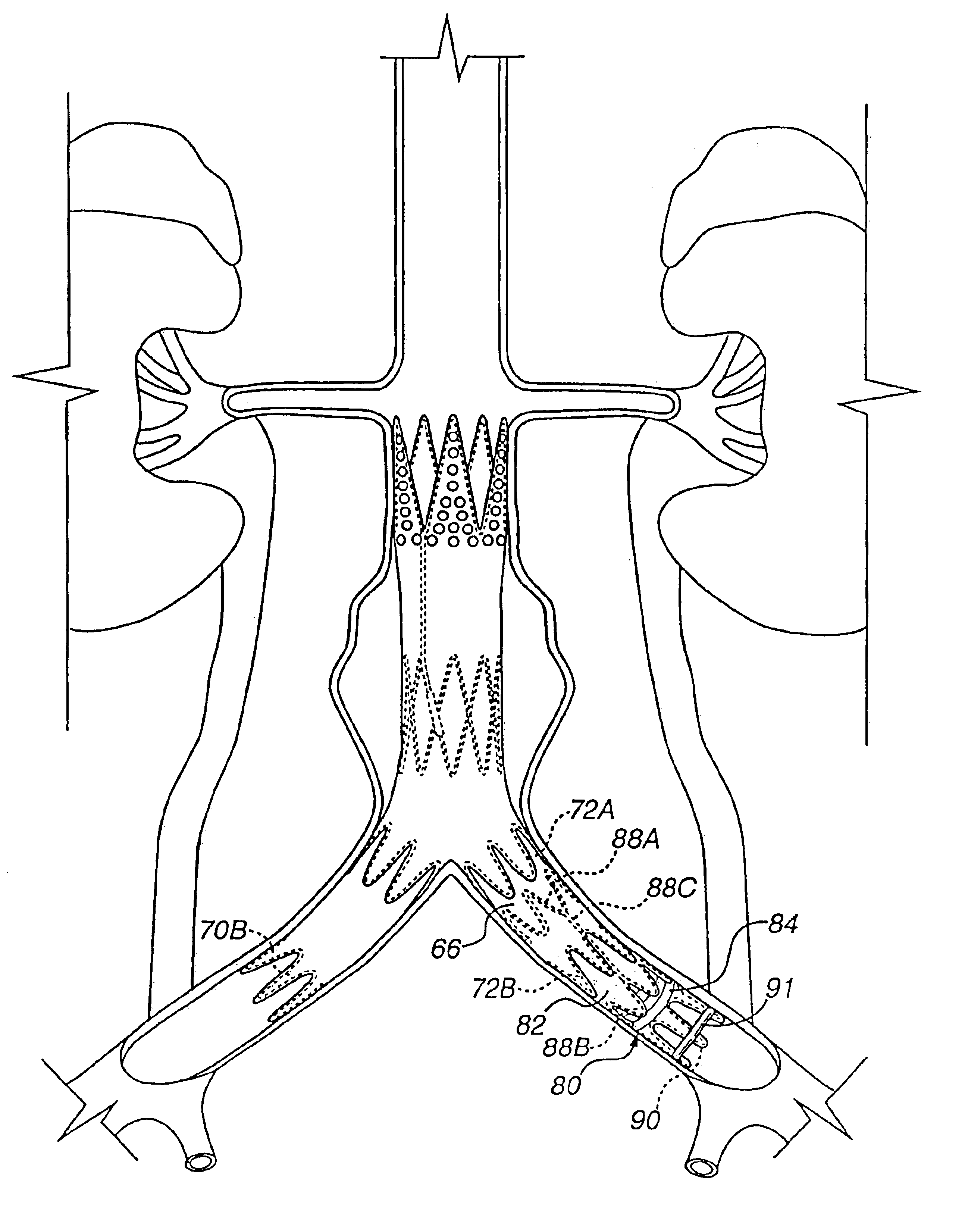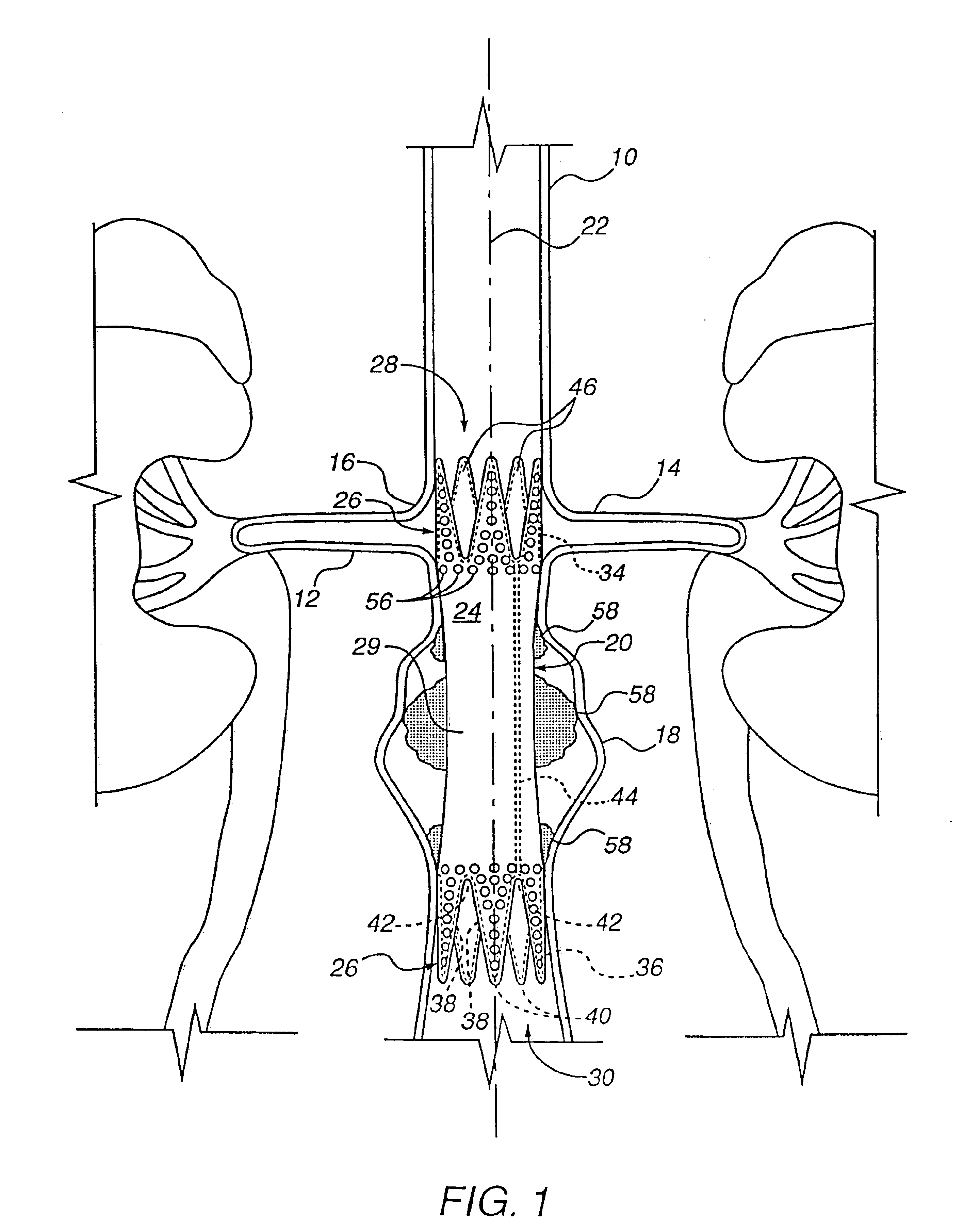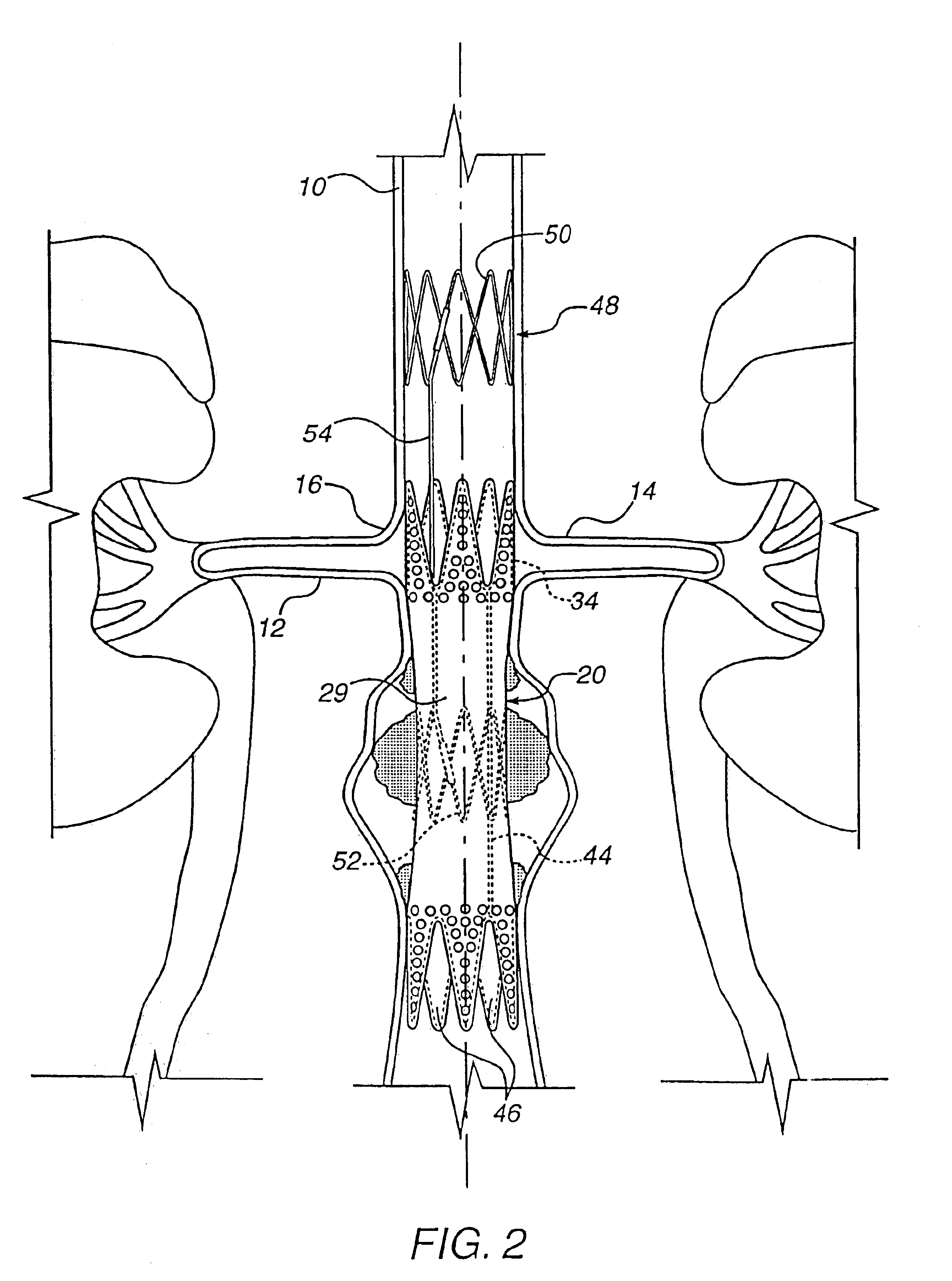Method for engrafting a blood vessel
a blood vessel and graft technology, applied in the field of catheter-based graft systems, can solve the problems of life-threatening, increased risk of complications, and inability of the vessel lumen to conduct fluids
- Summary
- Abstract
- Description
- Claims
- Application Information
AI Technical Summary
Benefits of technology
Problems solved by technology
Method used
Image
Examples
Embodiment Construction
Referring initially to FIG. 1, there is shown an aorta 10 joined by renal arteries 12 and 14 at aorto-renal junction 16, and having an aneurysm 18 below the aorto-renal junction characterized by a weakened and expanded vessel wall at the diseased region. In accordance with the present invention, an elongated single-limb tubular graft 20 is deployed at the region of aneurysm 18 as a prosthetic device for the purpose of relieving blood flow pressure against the weakened vessel wall by acting as a fluid conduit through the region of the aneurysm. In its deploye condition, graft 20 defines a central longitudinal axis 22 extending in a direction of blood flow through aorta 10, and generally comprises a deformable graft material 24 enclosing radially compressible spring means 26 for biasing a proximal end 28 and a distal end 30 of the graft into conforming fixed engagement with an interior surface of aorta 10.
Graft material 24 is a biocompatible, flexible and expandable, low-porosity wove...
PUM
 Login to View More
Login to View More Abstract
Description
Claims
Application Information
 Login to View More
Login to View More - R&D
- Intellectual Property
- Life Sciences
- Materials
- Tech Scout
- Unparalleled Data Quality
- Higher Quality Content
- 60% Fewer Hallucinations
Browse by: Latest US Patents, China's latest patents, Technical Efficacy Thesaurus, Application Domain, Technology Topic, Popular Technical Reports.
© 2025 PatSnap. All rights reserved.Legal|Privacy policy|Modern Slavery Act Transparency Statement|Sitemap|About US| Contact US: help@patsnap.com



